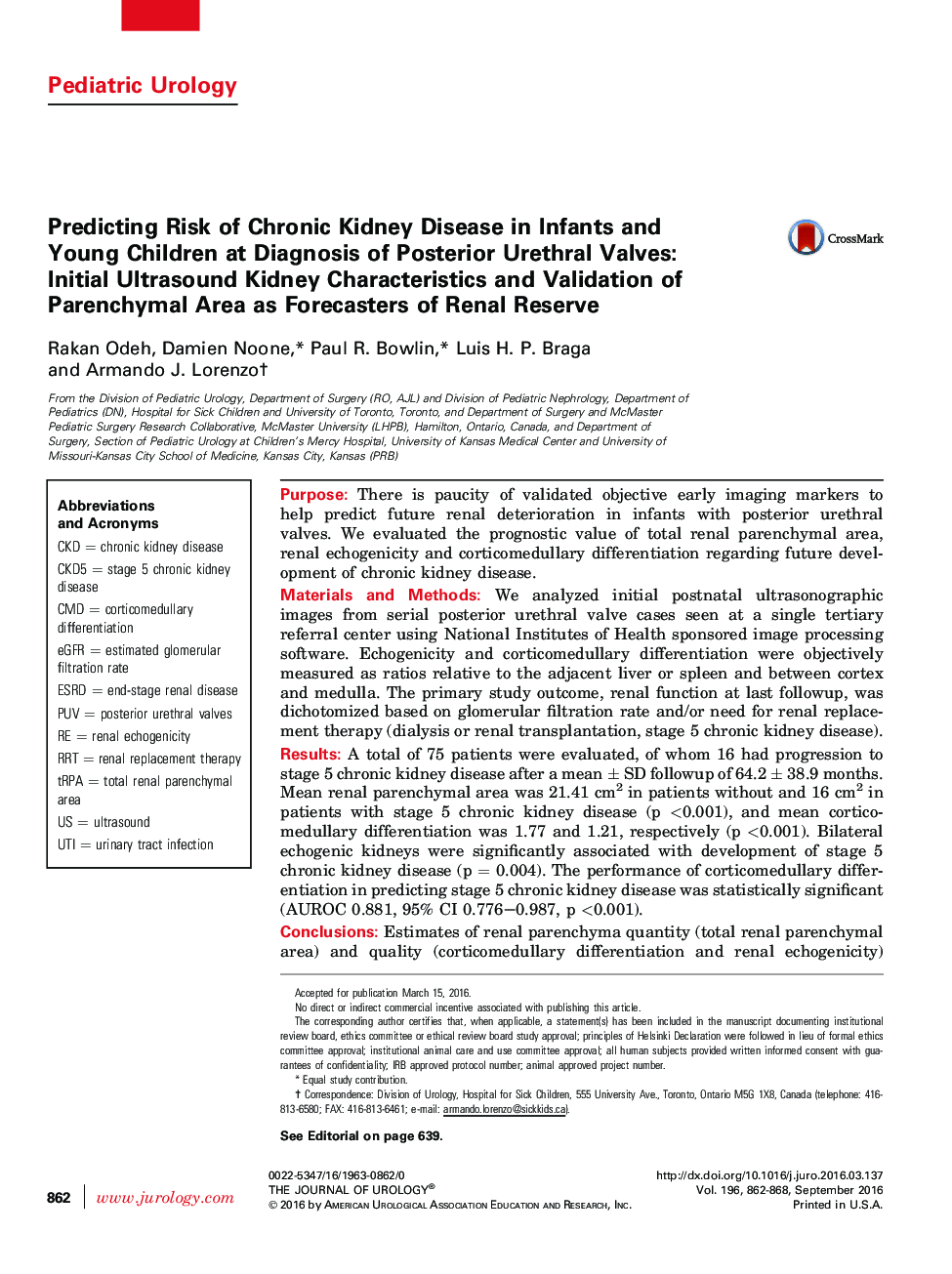| کد مقاله | کد نشریه | سال انتشار | مقاله انگلیسی | نسخه تمام متن |
|---|---|---|---|---|
| 3857900 | 1598872 | 2016 | 7 صفحه PDF | دانلود رایگان |

PurposeThere is paucity of validated objective early imaging markers to help predict future renal deterioration in infants with posterior urethral valves. We evaluated the prognostic value of total renal parenchymal area, renal echogenicity and corticomedullary differentiation regarding future development of chronic kidney disease.Materials and MethodsWe analyzed initial postnatal ultrasonographic images from serial posterior urethral valve cases seen at a single tertiary referral center using National Institutes of Health sponsored image processing software. Echogenicity and corticomedullary differentiation were objectively measured as ratios relative to the adjacent liver or spleen and between cortex and medulla. The primary study outcome, renal function at last followup, was dichotomized based on glomerular filtration rate and/or need for renal replacement therapy (dialysis or renal transplantation, stage 5 chronic kidney disease).ResultsA total of 75 patients were evaluated, of whom 16 had progression to stage 5 chronic kidney disease after a mean ± SD followup of 64.2 ± 38.9 months. Mean renal parenchymal area was 21.41 cm2 in patients without and 16 cm2 in patients with stage 5 chronic kidney disease (p <0.001), and mean corticomedullary differentiation was 1.77 and 1.21, respectively (p <0.001). Bilateral echogenic kidneys were significantly associated with development of stage 5 chronic kidney disease (p = 0.004). The performance of corticomedullary differentiation in predicting stage 5 chronic kidney disease was statistically significant (AUROC 0.881, 95% CI 0.776–0.987, p <0.001).ConclusionsEstimates of renal parenchyma quantity (total renal parenchymal area) and quality (corticomedullary differentiation and renal echogenicity) measured on initial postnatal ultrasound carry prognostic value in determining future risk of stage 5 chronic kidney disease in patients with posterior urethral valves. These data are promising for developing tools to risk stratify patients, counsel parents and customize monitoring protocols.
Journal: The Journal of Urology - Volume 196, Issue 3, September 2016, Pages 862–868